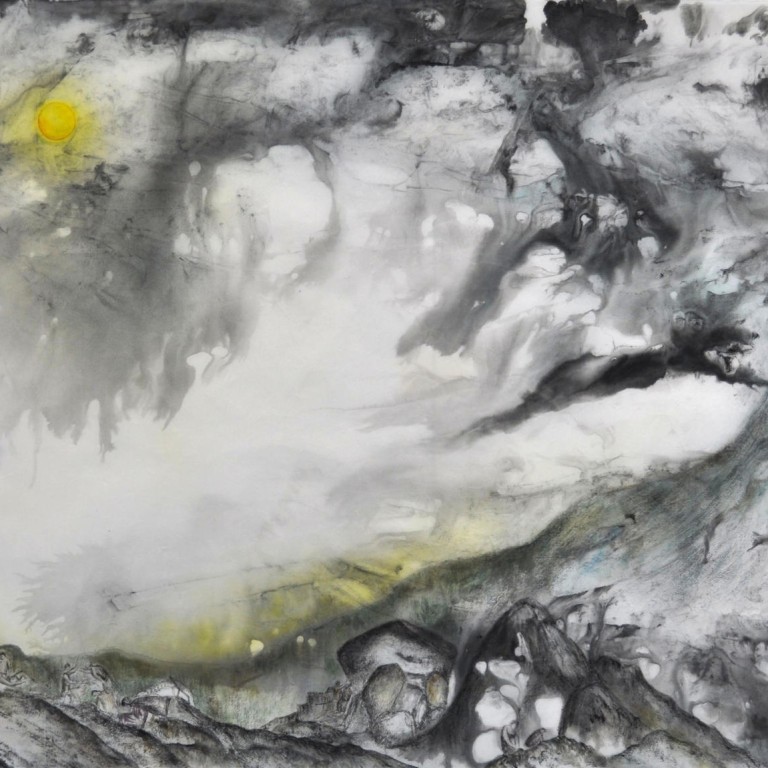
Hong Kong artist reimagines Turner landscapes as Chinese ink paintings
Li Fung-chun was attracted to the 19th century British artist's paintings by their tension and tranquillity
The Romantic paintingsand drawings by J.M.W. Turner find an unlikely, though arguably fitting, new incarnation in an exhibition of Chinese contemporary ink paintings. For her selection of ink-on-paper work, the Hong Kong artist Li Fung-chun has drawn inspiration from six pieces that the British painter made between the 1790s and 1820s.
While this approach echoes the 19th century landscapist's penchant for emulating the Old Masters during his Royal Academy tenure, it may also be considered alongside the historical practice of in the ink-wash tradition to copy well-known precedents.
Some of the pieces are evocative of dreams. Turner's watercolour seascape (1823) is, for example, reinvented with a desolate cloud of blue-tinted ink that branches out in strange forms towards the edge of the paper.

"My paintings have often been about storms and other natural disasters," says Li, a fine arts graduate of Royal Melbourne Institute of Technology. "I was attracted to Turner's paintings by the tension and tranquillity that his work alternately captured. I'm moved by both the sublime beauty and the forces of nature he depicted."
For Li, the contradiction is key. Having worked with materials that range from the traditional to the more idiosyncratic (she has used ashes from burnt wood, rusty nails and sand in her mixed-media paintings), she observes that the only constant in her work has been the subject of "chaos".
Before the storms in the current series, Li has previously tackled other similar themes such as the invasion of personal privacy and the history of sexual abuse of the Cambodian children she visited and briefly counselled. "Making those pieces put my mind in a mist; it took me a long time to emerge from that shadow," says the artist. "But I'm interested in things without order, and the dark side of the human psyche."
Although she admits to be growing increasingly comfortable with her method of blending the discrete traditions of Chinese and Western painting, a delicate balance which is perceptible in the new set of paintings, the 26-year-old insists she will not be settling down as a Chinese ink painter — despite the form's robust popularity in the art market.
"I'd like to stay versatile," she says. "I'm capable of working in different forms — not just Chinese painting. Apart from doing landscapes, it's possible that I will try to incorporate a social element in the conceptualisation of my work."

